Abstract
The selection due to the "healthy worker effect" was estimated from a random sample of the total Finnish population. The sample of 20 000 people was followed for changes in occupations from 1960 to 1970 and for deaths in 1971-5. Those entering the active work force had a standard mortality ratio of 70, indicating a healthy population selection effect. Those staying in the same occupational category from 1960 to 1970 had a 20% lower mortality than those who did not. This survivor population effect was due to changes to another occupational group and to early retirement. These factors had an inverse effect on the survival history of an occupational group.
Full text
PDF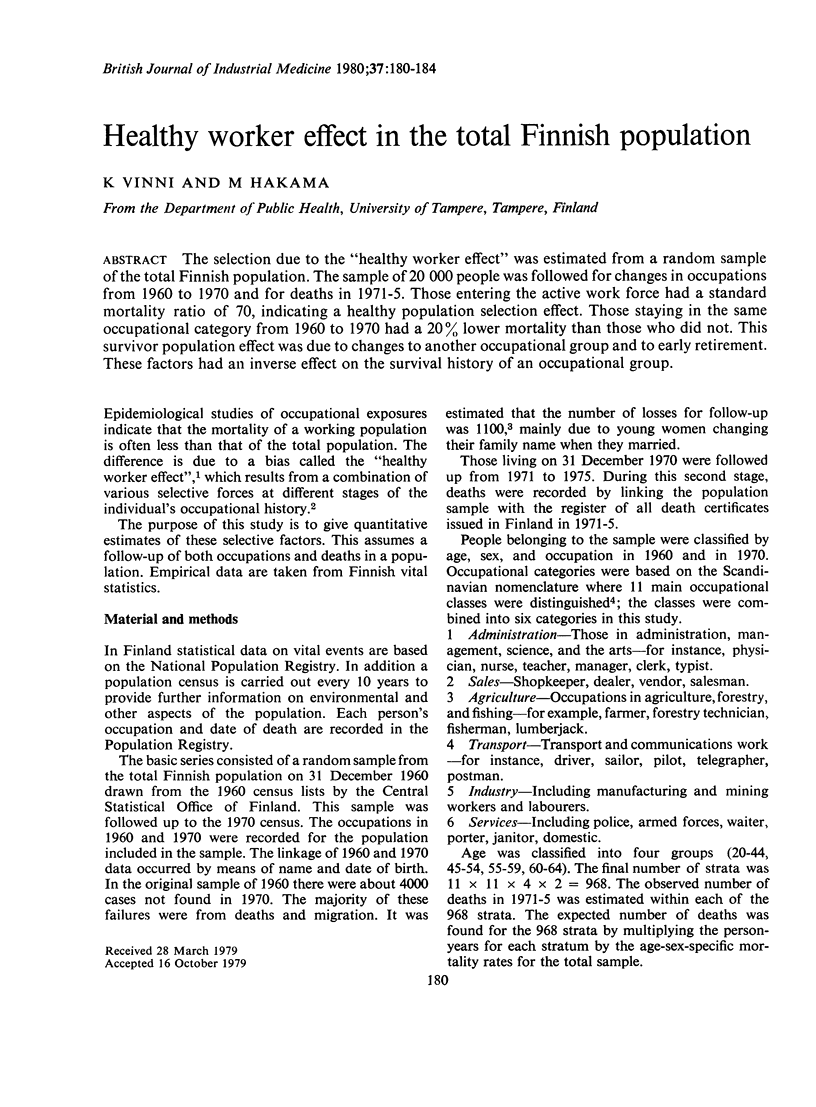
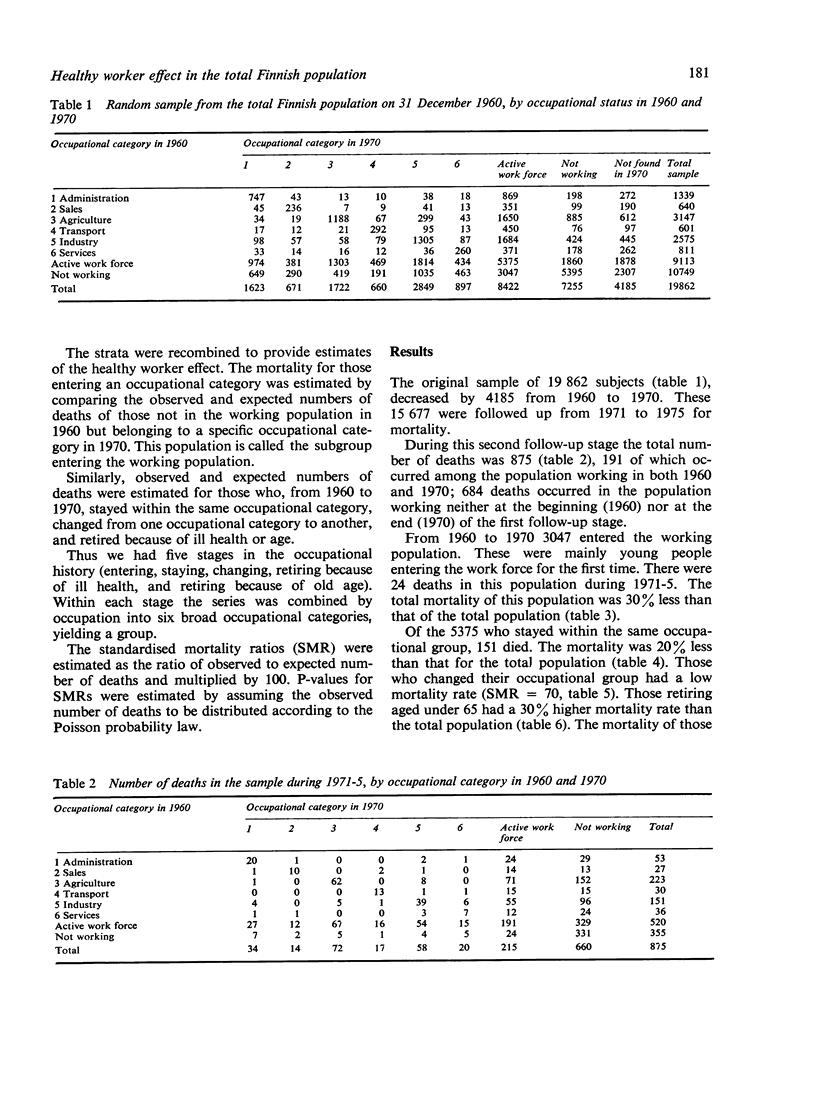
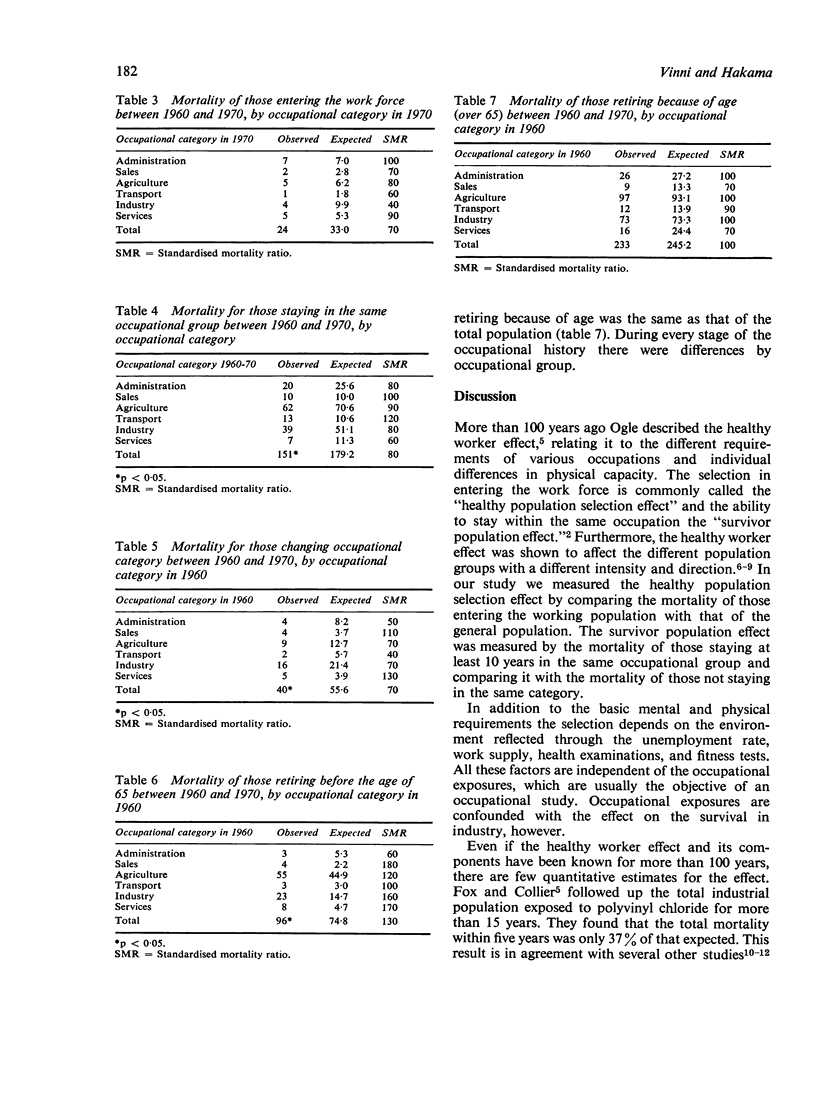
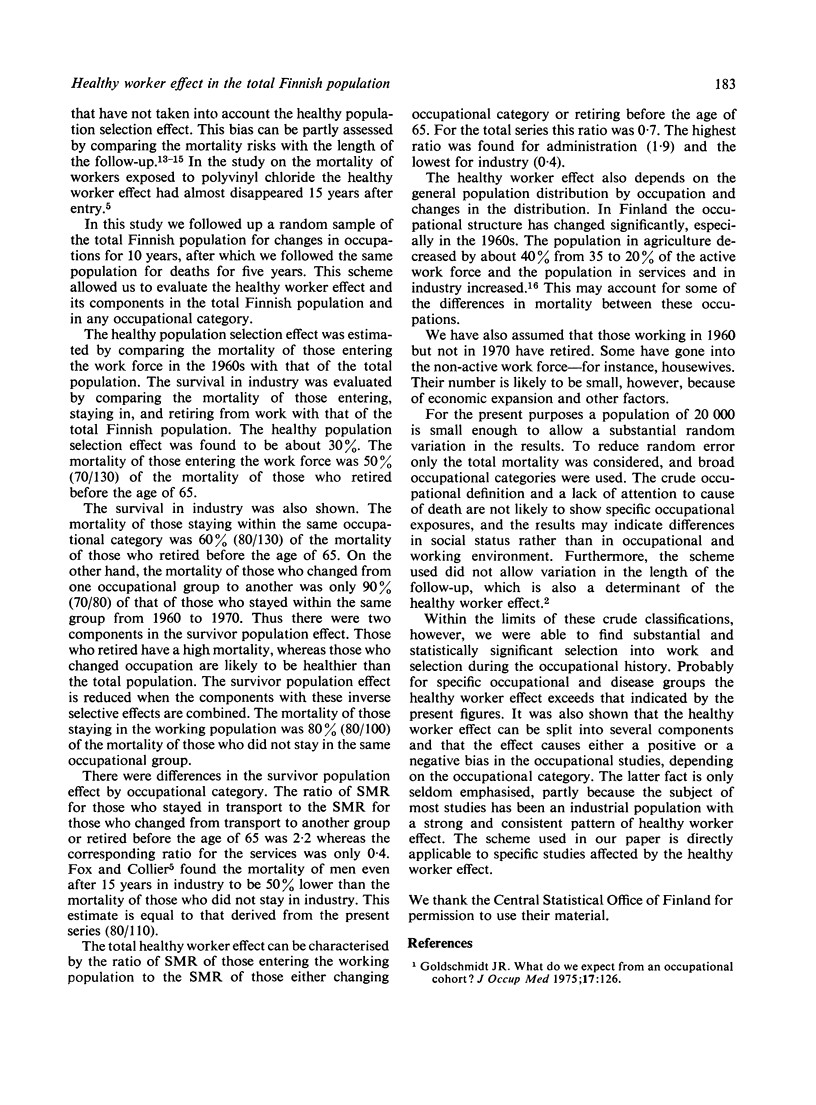
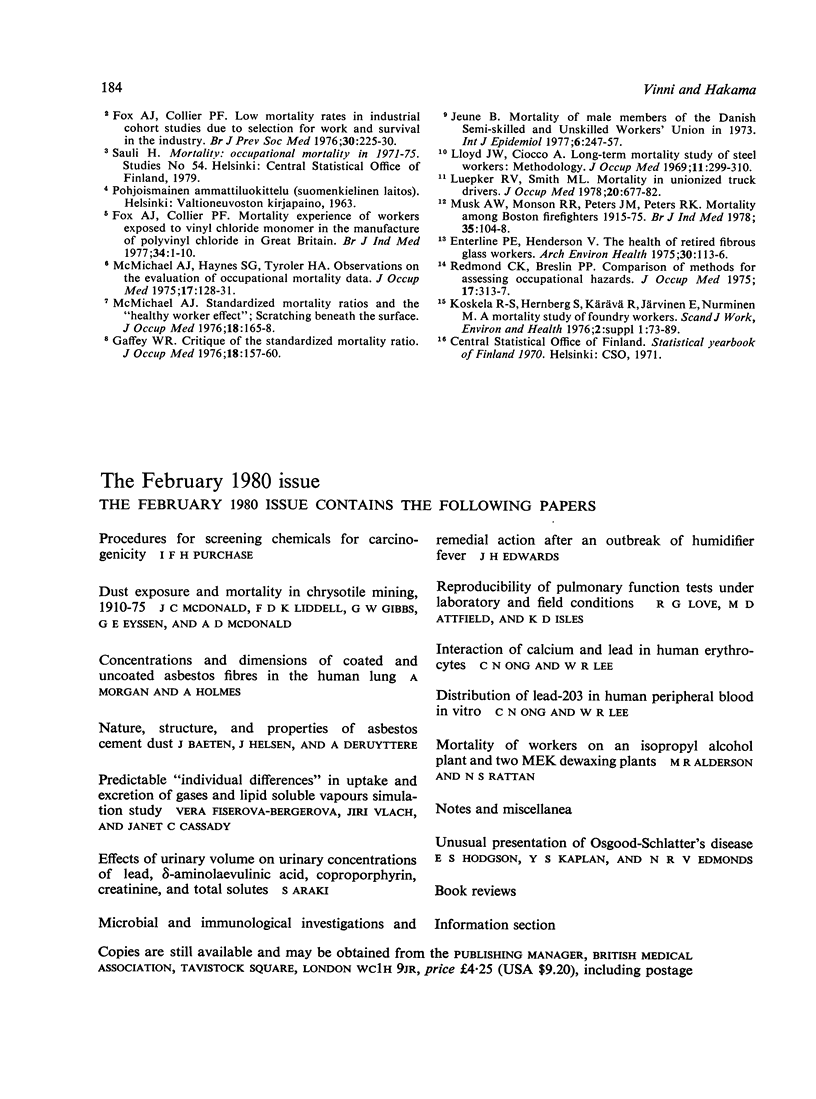
Selected References
These references are in PubMed. This may not be the complete list of references from this article.
- Enterline P. E., Henderson V. The health of retired fibrous glass workers. Arch Environ Health. 1975 Mar;30(3):113–116. doi: 10.1080/00039896.1975.10666658. [DOI] [PubMed] [Google Scholar]
- Fox A. J., Collier P. F. Low mortality rates in industrial cohort studies due to selection for work and survival in the industry. Br J Prev Soc Med. 1976 Dec;30(4):225–230. doi: 10.1136/jech.30.4.225. [DOI] [PMC free article] [PubMed] [Google Scholar]
- Fox A. J., Collier P. F. Mortality experience of workers exposed to vinyl chloride monomer in the manufacture of polyvinyl chloride in Great Britain. Br J Ind Med. 1977 Feb;34(1):1–10. doi: 10.1136/oem.34.1.1. [DOI] [PMC free article] [PubMed] [Google Scholar]
- Gaffey W. R. A critique of the standardized mortality ratio. J Occup Med. 1976 Mar;18(3):157–160. doi: 10.1097/00043764-197603000-00007. [DOI] [PubMed] [Google Scholar]
- Goldsmith J. R. Letter: What do we expect from an occupational cohort? J Occup Med. 1975 Feb;17(2):126–131. doi: 10.1097/00043764-197502000-00016. [DOI] [PubMed] [Google Scholar]
- Jeune B. Mortality of male members of the Danish Semi-skilled Unskilled Workers' Union in 1973. Int J Epidemiol. 1977 Sep;6(3):247–257. doi: 10.1093/ije/6.3.247. [DOI] [PubMed] [Google Scholar]
- Koskela R. S., Hernberg S., Kärävä R., Järvinen E., Nurminen M. A mortality study of foundry workers. Scand J Work Environ Health. 1976;2 (Suppl 1):73–89. doi: 10.5271/sjweh.2829. [DOI] [PubMed] [Google Scholar]
- Lloyd J. W., Ciocco A. Long-term mortality study of steelworkers. I. Methodology. J Occup Med. 1969 Jun;11(6):299–310. doi: 10.1097/00043764-196906000-00001. [DOI] [PubMed] [Google Scholar]
- Luepker R. V., Smith M. L. Mortality in unionized truck drivers. J Occup Med. 1978 Oct;20(10):677–682. [PubMed] [Google Scholar]
- McMichael A. J. Standardized mortality ratios and the "healthy worker effect": Scratching beneath the surface. J Occup Med. 1976 Mar;18(3):165–168. doi: 10.1097/00043764-197603000-00009. [DOI] [PubMed] [Google Scholar]
- Musk A. W., Monson R. R., Peters J. M., Peters R. K. Mortality among Boston firefighters, 1915--1975. Br J Ind Med. 1978 May;35(2):104–108. doi: 10.1136/oem.35.2.104. [DOI] [PMC free article] [PubMed] [Google Scholar]
- Redmond C. K., Breslin P. P. Comparison of methods for assessing occupational hazards. J Occup Med. 1975 May;17(5):313–317. [PubMed] [Google Scholar]


